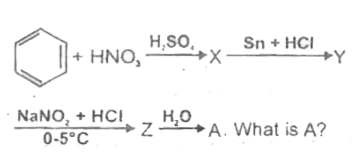What is hypervitaminoses and avitaminoses?
Step-by-Step Solution:
1. Definition of Hypervitaminosis:
- Hypervitaminosis refers to a condition that results from the excessive intake of vitamins, particularly fat-soluble vitamins like Vitamin A and Vitamin D. When these vitamins are consumed in large amounts, they can accumulate in the body and lead to toxic effects.
2. Causes of Hypervitaminosis:
- The primary cause of hypervitaminosis is the overconsumption of vitamin supplements or foods rich in specific vitamins. For example, consuming too many carrots (rich in Vitamin A) or excessive sun exposure (for Vitamin D) can lead to this condition.
3. Symptoms of Hypervitaminosis:
- Symptoms may vary depending on the vitamin involved but can include nausea, headaches, dizziness, and in severe cases, organ damage.
4. Definition of Avitaminosis:
- Avitaminosis is a condition characterized by the deficiency of vitamins in the body. This can occur when there is a lack of one or more vitamins in the diet, leading to various health issues.
5. Causes of Avitaminosis:
- Avitaminosis can be caused by inadequate dietary intake, malabsorption disorders, or certain medical conditions that affect nutrient absorption.
6. Symptoms of Avitaminosis:
- Symptoms of avitaminosis can vary widely depending on which vitamins are deficient. Common symptoms include fatigue, weakness, and a range of specific symptoms related to the deficiency of particular vitamins (e.g., scurvy from Vitamin C deficiency).
Summary:
- Hypervitaminosis: Excessive intake of vitamins leading to toxicity, particularly with fat-soluble vitamins like A and D.
- Avitaminosis: Deficiency of vitamins in the body, often due to poor diet or absorption issues.
- Hypervitaminosis refers to a condition that results from the excessive intake of vitamins, particularly fat-soluble vitamins like Vitamin A and Vitamin D. When these vitamins are consumed in large amounts, they can accumulate in the body and lead to toxic effects.
- The primary cause of hypervitaminosis is the overconsumption of vitamin supplements or foods rich in specific vitamins. For example, consuming too many carrots (rich in Vitamin A) or excessive sun exposure (for Vitamin D) can lead to this condition.
- Symptoms may vary depending on the vitamin involved but can include nausea, headaches, dizziness, and in severe cases, organ damage.
- Avitaminosis is a condition characterized by the deficiency of vitamins in the body. This can occur when there is a lack of one or more vitamins in the diet, leading to various health issues.
- Avitaminosis can be caused by inadequate dietary intake, malabsorption disorders, or certain medical conditions that affect nutrient absorption.
- Symptoms of avitaminosis can vary widely depending on which vitamins are deficient. Common symptoms include fatigue, weakness, and a range of specific symptoms related to the deficiency of particular vitamins (e.g., scurvy from Vitamin C deficiency).
- Hypervitaminosis: Excessive intake of vitamins leading to toxicity, particularly with fat-soluble vitamins like A and D.
- Avitaminosis: Deficiency of vitamins in the body, often due to poor diet or absorption issues.
Topper's Solved these Questions
- BIOMOLECULESBOOK - ICSECHAPTER - BIOMOLECULESEXERCISE - EXERCISE (PART-II) (DESCRIPTIVE QUESTIONS)(SHORT ANSWER QUESTIONS)
67 Videos
- BIOMOLECULESBOOK - ICSECHAPTER - BIOMOLECULESEXERCISE - EXERCISE (PART-II)(DESCRIPTIVE QUESTIONS)(LONG ANSWER QUESTIONS)
31 Videos
- BIOMOLECULESBOOK - ICSECHAPTER - BIOMOLECULESEXERCISE - EXERCISE (PART-I)(MATCH OF THE FOLLOWING)
1 Videos
- APPENDIX II ( TYPICAL CONVERSIONS)BOOK - ICSECHAPTER - APPENDIX II ( TYPICAL CONVERSIONS)EXERCISE - AROMATIC CONVERSIONS
98 Videos
- CHEMICAL KINETICSBOOK - ICSECHAPTER - CHEMICAL KINETICSEXERCISE - ISC EXAMINATION QUESTIONS (NUMERICAL PROBLEMS )
57 Videos
Similar Questions
Knowledge Check

What is (A)?A B
B C
C D
D
What is concentration quotient and what is its significance?
View SolutionWhat is oogenesis. What are its main steps?
View SolutionWhat inhibits the releases ADH and what does it lead to ?
View SolutionWhat is hypertension? What are its causative factors ?
View SolutionWhat is carbylamine reaction and what is its significance ?
View SolutionWhat is ionosphere and what type of species are present in it?
View SolutionWhat are plasmodesmata and what is their role?
View Solution


